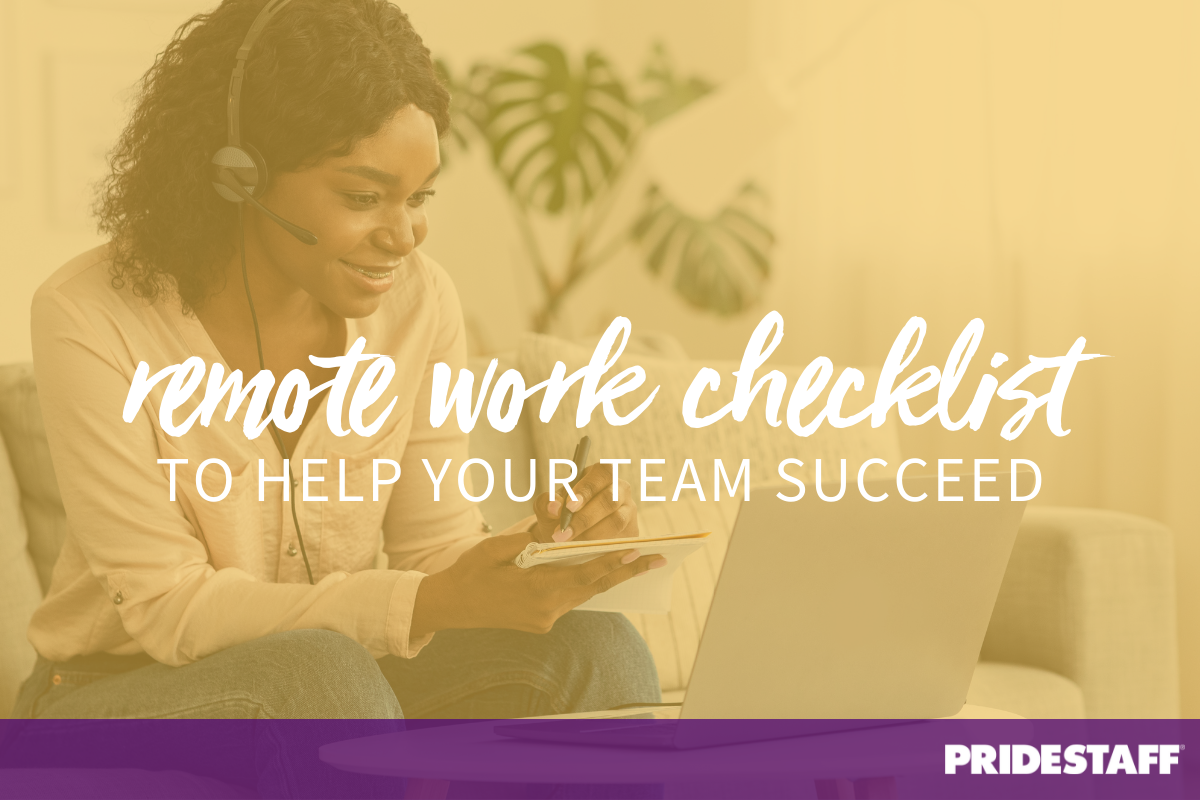Remote Work Checklist: Setting Your Remote Team up for Success

Remote work is here to stay, but it’s not for everyone and can easily go off the rails if employees do not receive the equipment, training, and support they need. But laying the right groundwork can lead to an engaged and productive remote workforce that’s not subject to the limitations of geography or working hours. Here are the best practices of companies that incorporate working from home into their business.
1. Discuss Workspace Security Requirements
If the employee will be working with confidential materials or interacting with clients who expect privacy, talk about how secure their space is. Do they need an office with a door? A locking file cabinet? Not all jobs can be performed effectively from the kitchen table. Discuss workplace safety and security/privacy standards. Put your policy in writing and require employees to sign it.
2. Start off on the Right Foot
- Decide which jobs can be done effectively off-site.
- Interview with remote work in mind.
- Onboarding well is essential. On-site is ideal but at least be sure to introduce employees to the team and the company culture.
- Set up a welcome video conference with manager and co-workers.
- Send company–branded merchandise if available (T-shirt, mug, etc.).
- Check to see they have all equipment, and it’s in good working order.
- Troubleshoot all communication channels.
- Complete necessary HR paperwork. Be sure they have resources for questions.
- Set up meetings with their team members and other key employees.
- Provide a checklist of contacts for IT, training, and HR.
3. Set (Mutual) Expectations
- Discuss the required schedule, timekeeping, and performance standards.
- Ask the employee what level of communication and support they need.
- If the position is only temporarily off-site, inform the employee up front.
- Discuss company culture, vision, and mission.
- Go over expectations and work–from-home policies.
- Discuss company standards for Data Security and PII.
- Be sure KPIs measure the right things.
- Match with a mentor to guide them through the transition.
- Schedule regular check-in calls.
4. Keep Remote Employees on Track
- Use project management software like Asana, Trello, or Freshdesk to keep projects on schedule.
- Try Notion, a tool that can be used for teams or individuals to manage their days, projects, and notes.
- Some organizations with large remote teams have had success with Basecamp, all-in-one software for project management, communication, accountability, and collaboration.
- Schedule weekly one-on-one meetings.
- Discuss upcoming projects, progress, and resolve potential issues.
- Establish performance goals for the month, quarter, and year.
- Set clear expectations and requirements for tasks.
PrideStaff is here to help.
Our new whitepaper, The Remote Work Experience: What Employees Want You to Know, will help you recruit, train, and manage remote workers effectively. Visit our website here to download a free copy today.
Laying the proper groundwork can ensure your team is set up for success and can make it easier to recruit the right people in the first place. Our national staffing firm can help you find the right talent and help you get them off to the right start. Contact your local PrideStaff office today to start a conversation.



